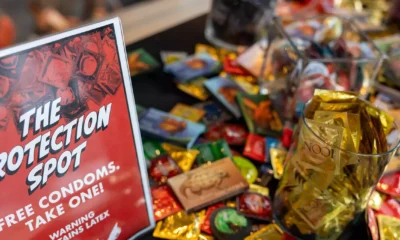border
Guatemalan Teen Who Died in 2008 Arizona Desert Finally Identified

The remains of a young woman found in the Southern Arizona desert in 2008 have finally been identified, bringing closure to her family after 17 years. Maria Eluvia Mendez Morales, a 16-year-old from San Marcos, Guatemala, was discovered along a dirt road in the Tohono O’Odham Nation, nearly a mile from the nearest highway, near Haivana Nakya.
Eluvia’s autopsy concluded she likely died from heat exposure. Standing at 4’9″ and weighing 92 pounds, she was wearing blue jeans, a dark green long-sleeved shirt, and black tennis shoes. The personal items found with her included two papers with phone numbers and addresses, a Virgin Mary card, and a small amount of currency — all inconclusive for identification.
Initially categorized as a Jane Doe, her cremated remains were stored in a Tucson columbarium, home to about 700 other unidentified bodies. Forensic anthropologist Dr. Bruce Anderson stated that many of these individuals perished attempting to cross the border.
In a breakthrough last month, the nonprofit Moxxy Forensic Investigations announced it had successfully identified Eluvia. Although the name on her fake ID was correct, there was a discrepancy with her birth date, which contributed to the delay in identification.
Dr. Anderson remarked on the tragedy of her extended anonymity, noting that Eluvia’s name is rare in Mexico but common in Guatemala. She had been one of the earliest cases entered in the National Missing and Unidentified Persons System.
Moxxy’s geneticists analyzed Eluvia’s DNA and determined she was 100% Indigenous from Latin America. Unfortunately, there were no matches in available DNA databases, primarily because many profiles belong to white Americans. The disparity in representation in these databases complicates the identification of non-white individuals like Eluvia.
With traditional methods yielding no results, investigators turned to social media for assistance. A post featuring Eluvia’s photographs eventually led to her sister, Laura, who confirmed her identity. Laura shared that Eluvia had left their hometown for Guatemala City years earlier, and her abrupt disappearance had left the family longing for answers.
The harsh reality of migration in the Tohono O’Odham Nation is stark. The area, spanning 75 miles along the U.S.-Mexico border, is a perilous route for migrants. Former Chairman Ned Norris Jr. noted that around 700 migrants crossed through the region daily at the time of Eluvia’s death. U.S. immigration policies have since pushed migrants into more dangerous terrains, raising the risks involved.
Despite recent declines in border apprehensions, 154 human remains were recovered in Arizona over the past year, illustrating the ongoing dangers faced by migrants. Since 2001, Pima County Medical Examiner’s Office has processed over 4,000 cases, identifying approximately two-thirds, primarily using fingerprints and bone samples.
Efforts to locate missing migrants often involve social media as families search for their loved ones. Facebook groups dedicated to identifying the deceased overflow with anguished comments from those hoping for news about missing family members. Laura’s own journey of seeking closure has been difficult; she plans to bury Eluvia’s ashes in Guatemala beside their mother’s grave, longing for peace after years of uncertainty.


















